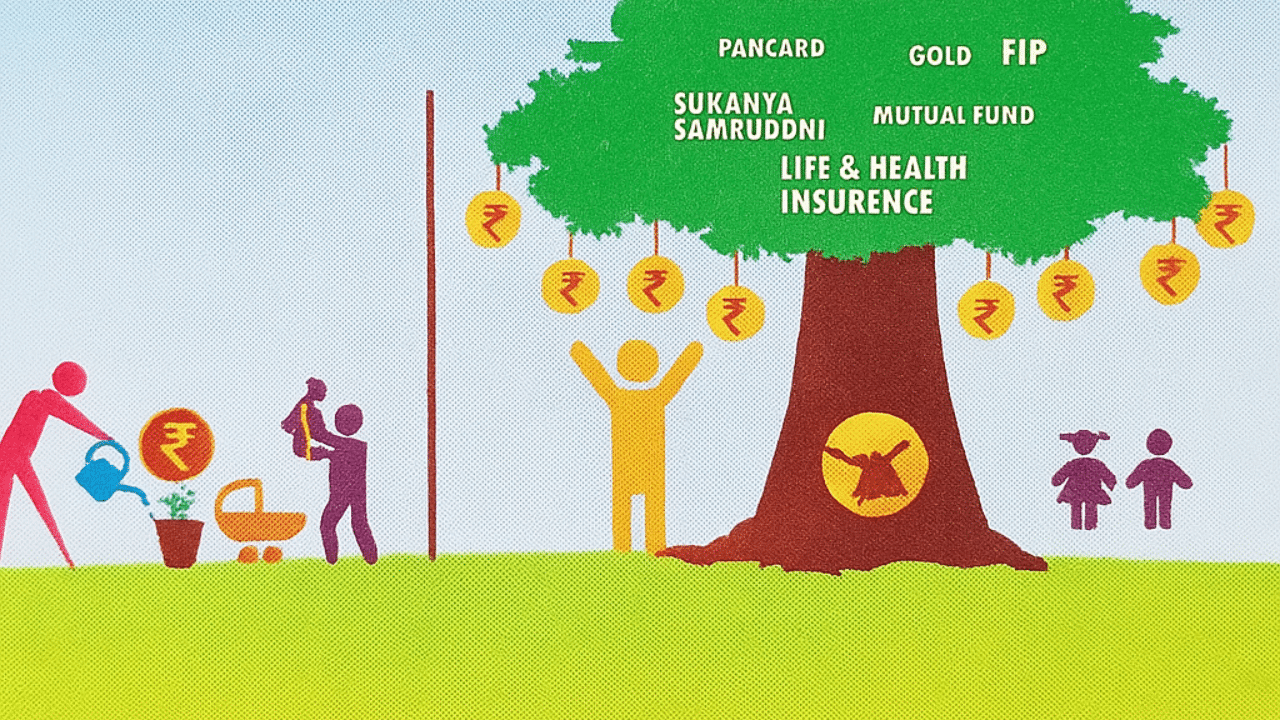Are You teaching kids financial literacy Your Children These Essential Money Lessons?

It’s not enough to simply scold your children over their schoolwork. True education goes beyond textbooks—it includes life skills that prepare them for the real world. And one of the most important life skills you can teach your child is financial literacy.
Once children reach an age where they can understand basic concepts, it’s crucial to introduce them to money management. Teach them how money comes in and goes out. Help them understand not just how to earn money, but also how to save and manage it wisely. This knowledge will shape them into responsible, financially aware adults.
The Mantra of Saving
Saving is the cornerstone of financial success. But how can children appreciate the value of saving if they don’t understand where money comes from or where it goes? Investment principles, financial planning, and money discipline all start at home.

Today, corporate-led financial literacy programs are being offered—some costing lakhs of rupees. These courses are often targeted at parents desperate for their children to understand finance. Some progressive schools have started teaching concepts of income and expenditure from as early as eighth grade.
But the truth is, you don’t need to spend a fortune to instill these values. Financial literacy isn’t some abstract, incomprehensible subject. It’s not a Brahmapadhartha (an unattainable truth). If we start with basic, everyday money lessons, every child can develop a sound understanding of economics—without needing a Nobel Prize.
Simple Financial Rules to Live By
You don’t have to be an economist to live within your means. Here are three core principles that can be easily passed on to children:
-
Spend within your income.
-
If expenses can’t be reduced, look for ways to increase income.
-
Avoid unnecessary and unqualified expenses or donations.

These simple rules can shield any household from falling into a financial crisis. Once children understand how to manage expenses, they will naturally begin to appreciate the value of savings and investments.
Parents play a crucial role here. Children learn not just from what we say—but from what we do. If parents live lavishly, children will think that’s normal. If parents live frugally and wisely, children are more likely to emulate that.
Help them grasp questions like:
-
What is the household income?
-
How much do we spend monthly?
-
Where are we investing?
-
Why is debt risky?
Don’t Just Share Your Successes—Share Your Failures Too
It’s important to be transparent about both the victories and the mistakes you’ve made with money. Talk about that wrong investment decision, or the loan that became a burden. Show them the effort it took to recover.

This doesn’t mean you’re burdening them with worry—it’s about teaching them resilience and foresight. If they see how mistakes were corrected with discipline and effort, they’re less likely to repeat those same errors.
A high salary means nothing if spending is reckless. Many end up swiping their credit cards just two weeks into the month. Teaching financial discipline from an early age can prevent such situations later in life. The setbacks you faced can become stepping stones for your children’s financial growth.
Let Them Take Charge
Experiential learning often beats theory. Here are some practical ways to teach children about money:
-
Involve them in shopping.
Take them to the supermarket and ask them to compare prices, choose items, and even handle the billing. It builds awareness of costs and choices. -
Let them plan.
If you’re going on a family trip, give them a budget and ask them to create a plan. It’s a fun way to introduce budgeting. -
Don’t hand out money too easily.
Only give money when the reason is justified. This teaches the importance of earning and prioritizing. -
Show them the big picture.
Talk to them about how you’re saving for their future—whether it’s school fees, higher education, or other expenses. When they realize how hard you work to support them, they’ll be more motivated to be responsible in return.
Teaching children about money is one of the most valuable life lessons you can give. The earlier they learn, the better equipped they’ll be to make wise choices—both now and in the future.

Real-Life Example: Teaching Budgeting on a Family Trip
When Suman planned a short weekend getaway with her family, she saw it as a perfect opportunity to teach her 13-year-old son, Aarav, about budgeting.
Instead of booking everything herself, she gave Aarav a challenge:
“Here’s ₹10,000. Plan a two-day trip for the family. You’ll need to cover travel, food, and accommodation. Make the most of it.”
Aarav excitedly got to work. He researched budget hotels, compared travel options, and created a simple spreadsheet. He realized quickly that choosing a cab over a train would eat up nearly half the budget. So, he opted for the train and used the savings to book a better hotel.
They had a great trip—and more importantly, Aarav got a practical lesson in managing money, prioritizing expenses, and sticking to a budget. Now, when he asks for pocket money, he thinks twice before spending.
✨ About Me
Hi! I’m Manikanta Reddy, a passionate finance enthusiast with a strong understanding of money management, personal finance, and smart investment strategies. I believe financial literacy is the foundation of a secure and stress-free life — and I’m here to share practical insights, real-life examples, and simplified advice to help you make better financial decisions.
Whether it’s choosing between paying off a loan or investing, building emergency funds, or planning for retirement — I love breaking down complex topics into easy, actionable tips that anyone can follow.
Let’s learn, grow, and build wealth — the smart way. 💰






1 thought on ““Why Teaching Kids Financial Literacy is the Best Investment for Their Future””